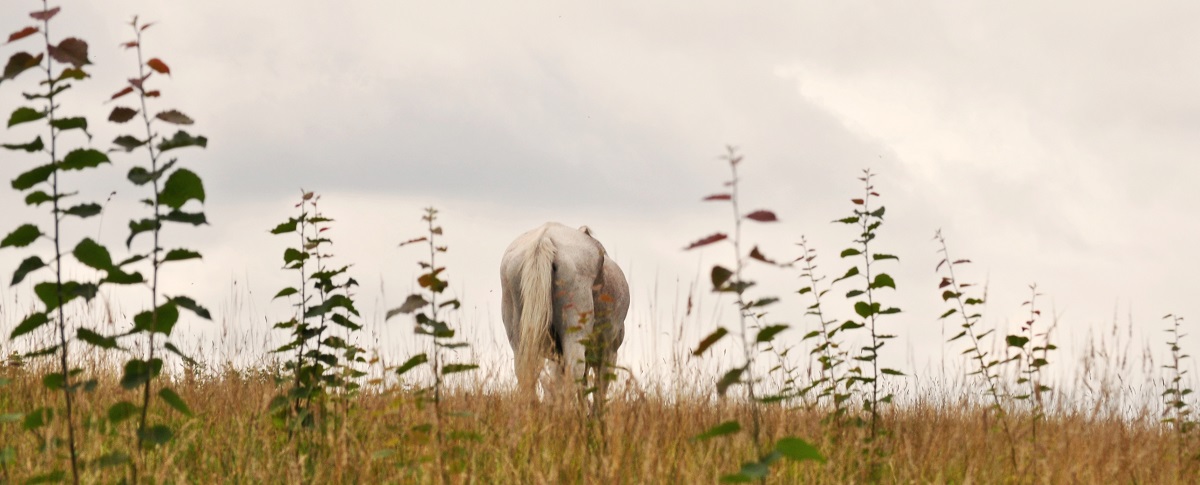
Chances are that as a horse owner or a regular rider you’ll have experienced Laminitis in one form or another by now. Laminitis can vary in severity from a just a hint of lameness causing discomfort, to – in the worst cases – the total collapse of the pedal (or coffin) bone known as “sinking” which could prove fatal.
As part of the Harry Hall One Club Member Benefits scheme, we have partnered with ArcEquine to offer One Club members an exclusive discount on the ArcEquine Microcurrent therapy kit. Read on to see how ArcEquine could help your horse:
What is Laminitis?
Laminitis is an extremely painful inflammation of the lamina and is a condition that can affect all members of the equine family. The wall of the hoof is composed of a tough and insensitive outer layer, known as the horn, which is connected to and supported by the internal, sensitive layer known as the lamina. The condition weakens the connective tissues and causes separation between the hoof wall and the pedal bone which makes it rotate and “sink” towards the sole.
Causes of Laminitis
A study conducted by the BMC Veterinary Research Journal assessed the causation of laminitis and related health factors and found that the following factors were “likely to be present before a laminitis episode was reported” (1):
- Overweight horses are more than 2x as likely to develop laminitis (2)
- Horses/ponies that are at an especially high risk of developing laminitis include those that(2):
- have previously contracted laminitis, specifically those that were not promptly diagnosed by a vet.
- are part of the native Ireland/UK pony breeds.
- took a long time to recover from an episode.
- had periods longer than 8 weeks in-between regular hoof care.
Laminitis can be classed as “acute” if it is still at its early stage and can be treated to prevent it from developing further. Chronic laminitis refers to an ongoing or recurring condition where damage has already been done permanently changing the hoof structure.
A study published in the Equine Veterinary Journal has found that laminitis is just as common as colic with 1 in 10 horses/ponies developing a laminitis episode every year. If it is not treated quickly in the correct way it can result in permanent damage, causing 15% of UK equine deaths per year.(3)
Preventing laminitis
A healthy and balanced diet is the first place to start, not only is it important to keep those excess pounds off, but studies have found that soluble carbohydrates such as sugars and starches can produce excess acidity in the gut which kills fibre digesting bacterium. Toxins released by the dying bacteria make their way into the bloodstream which compromises blood flow. A lack of healthy, nutrient & oxygen-rich blood circulation in the feet is known to increase the chances of laminitis.(3)
Avoiding trotting for extended periods of time on hard surfaces such as concrete or bitumen can help to prevent injury to the lamina, particularly for horses that already have compromised hooves.(3)
Traumatic laminitis is caused by repeated physical trauma to the feet during e.g. endurance riding, driving, or jumping on hard ground; it can also be caused by overenthusiastic hoof trimming. Additionally, severe lameness in one limb will cause a horse or pony to carry excessive weight on its other limbs, which may also cause laminitis.(3)
So how can ArcEquine Microcurrent Therapy help?
Microcurrent therapy aims to support the naturally occurring biocurrents within the body in order to boost the production of Adenosine Triphosphate (ATP). ATP provides the cell (and in turn the body) with the energy required for normal everyday functioning.
Damage within the tissues (inflammation) requires more ATP to enable the healing processes to take place. The rate at which the body can produce ATP is thought to be a major factor in governing how long it takes the body to heal and repair. Microcurrent Therapy produces a low-level electrical current, similar to the body’s own natural bio current, to help the cells increase the production of ATP which can then, in turn, reduce inflammation and associated pain and accelerate tissue repair.
Thanks to substantial and ongoing investments in Research and Development the ArcEquine is the smallest rechargeable wide-spectrum microcurrent device in the world. It is a completely drug-free and non-invasive pain management and tissue repair system that is worn by the horse during treatment. The ArcEquine fits into a special strap placed on the horse’s cannon bone and since the ArcEquine is battery powered and moisture resistant, treatments can take place anywhere and anytime.
Although there is no permanent ‘cure’ to laminitis, Microcurrent Therapy has an outstanding track record of reducing inflammation and when used in conjunction with a healthy diet and proper hoof maintenance, it can dramatically accelerate healing times.
Not only is the ArcEquine the only choice for 70 Olympians, 6 national teams, 14 Olympic medallists, 10 world champions, it’s also trusted by vets, equine chiropractors and physiotherapists and many other equine professionals.
To find out more about your Harry Hall One Club Member benefits click here.
References:
1 Wylie, C.E., Collins, S.N., Verheyen, K.L, Newton, J.R., 201 3b. Risk factors for equine laminitis: a case-control study conducted in veterinary-registered horses and ponies in Great Britain between 2009 and 2011. Vet. J. 190. 57-69
2https://www.bluecross.org.uk/pet-advice/laminitis-horses
3 Pollard et al. (2018) Incidence and clinical signs of owner-reported equine laminitis in a cohort of horses and ponies in Great Britain. Equine Vet Journal.
